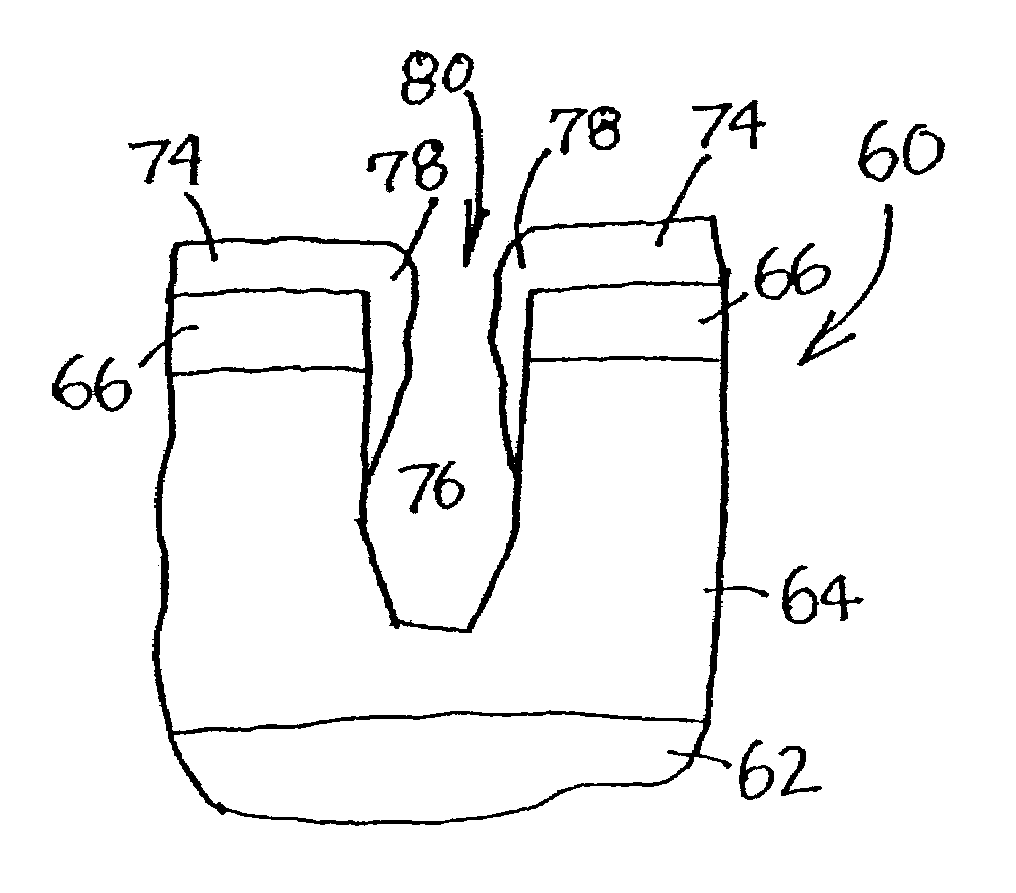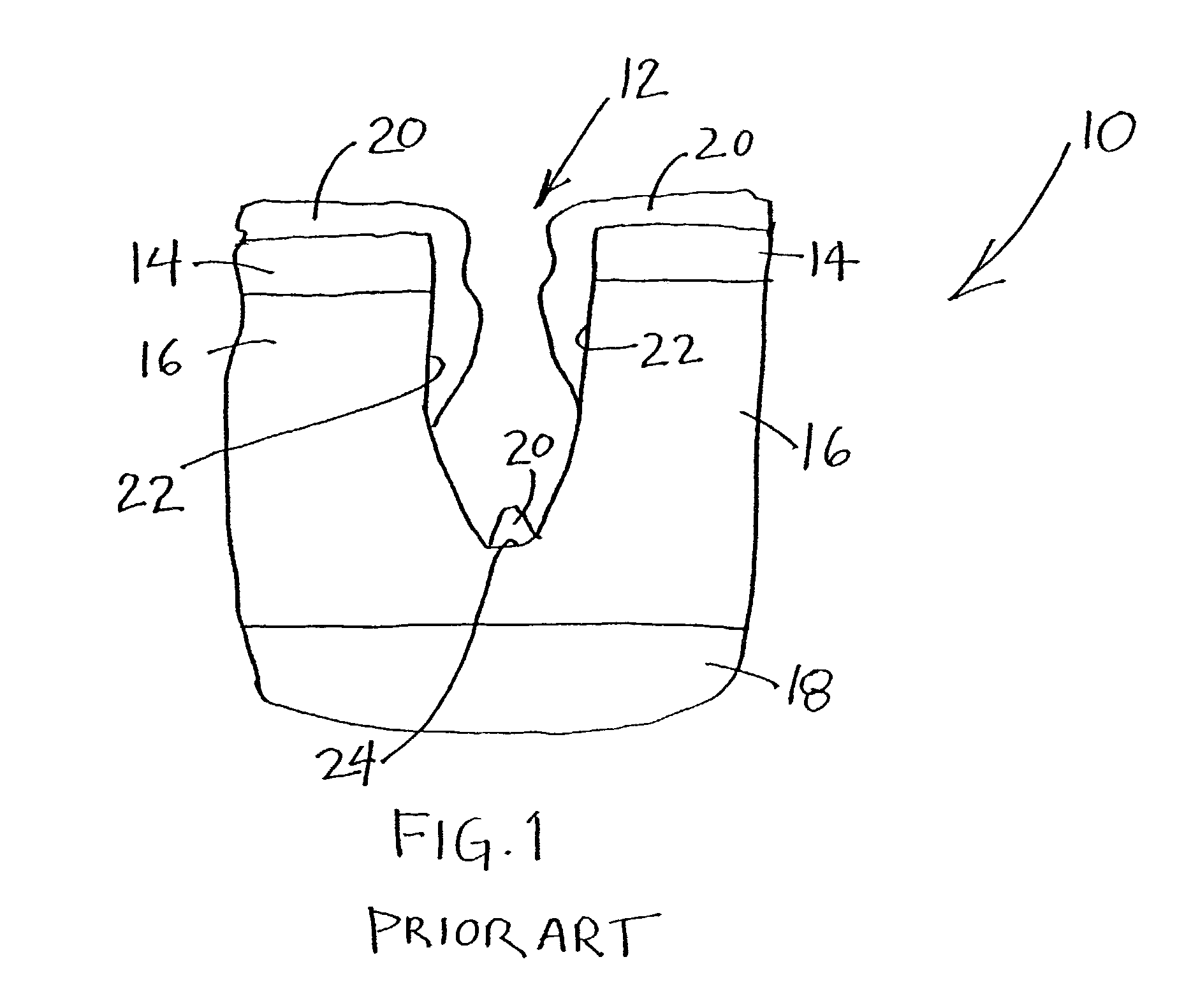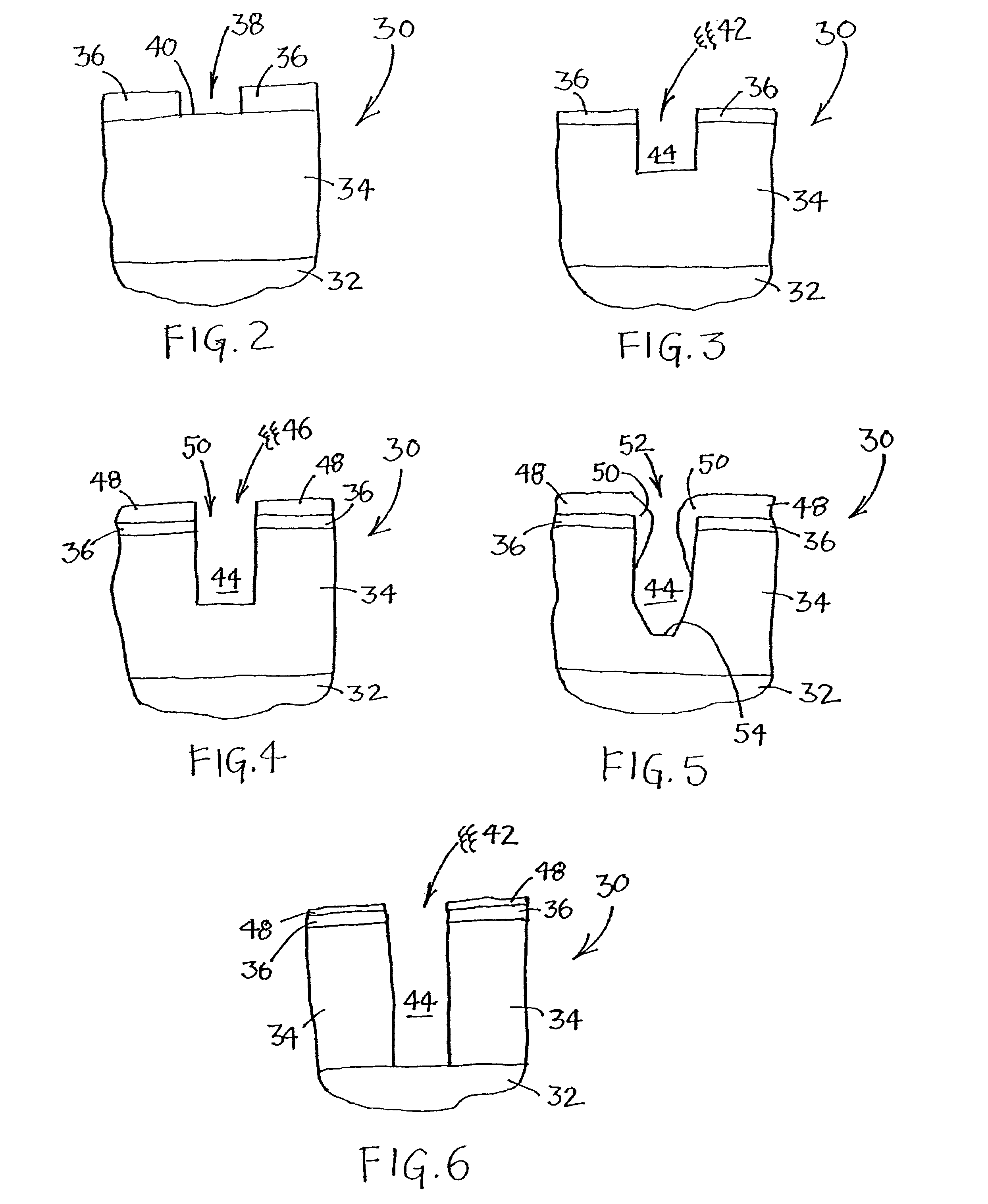Method to eliminate striations and surface roughness caused by dry etch
a technology of dry etching and surface roughness, which is applied in the direction of decorative surface effects, electrical equipment, decorative arts, etc., can solve the problems of etch features that are prone to striation, surface roughness and striation, and the resist layer gradually erodes away, so as to inhibit the erosion of the mask layer, and reduce the resist etching rate
- Summary
- Abstract
- Description
- Claims
- Application Information
AI Technical Summary
Benefits of technology
Problems solved by technology
Method used
Image
Examples
example
[0050]A wafer having a 20,000 angstroms layer of BPSG masked with a 7,600 angstroms layer of JSR-KRF-MISG (DUV) photoresist were etched in a MERIE etch chamber using a hydrofluorocarbon and fluorocarbon plasma with and without the addition of ammonia (NH3) to form contact openings through the oxide layer.
[0051]A first wafer (control wafer) was etched using a feed gas of 50 sccm CHF3, 25 sccm CF4, and 100 sccm Ar, at a pressure of 50 mTorr, power of 900 watts, ESC temperature of 10 C., and a time duration of 180 seconds. FIG. 12a shows a cross-sectional view of the resultant oxide layer with openings etched to a depth of about 7,100 angstroms. The thickness of the resist layer remaining after the etch was about 6,000 angstroms. FIG. 12b is a cross-sectional and oblique view of the surface of the etched oxide with overlying resist layer, showing the surface roughness of the resist. Such roughness has resulted in the development of striations at the top portion of a high aspect ratio e...
PUM
| Property | Measurement | Unit |
|---|---|---|
| depth | aaaaa | aaaaa |
| pressure | aaaaa | aaaaa |
| power level | aaaaa | aaaaa |
Abstract
Description
Claims
Application Information
 Login to View More
Login to View More - R&D
- Intellectual Property
- Life Sciences
- Materials
- Tech Scout
- Unparalleled Data Quality
- Higher Quality Content
- 60% Fewer Hallucinations
Browse by: Latest US Patents, China's latest patents, Technical Efficacy Thesaurus, Application Domain, Technology Topic, Popular Technical Reports.
© 2025 PatSnap. All rights reserved.Legal|Privacy policy|Modern Slavery Act Transparency Statement|Sitemap|About US| Contact US: help@patsnap.com



